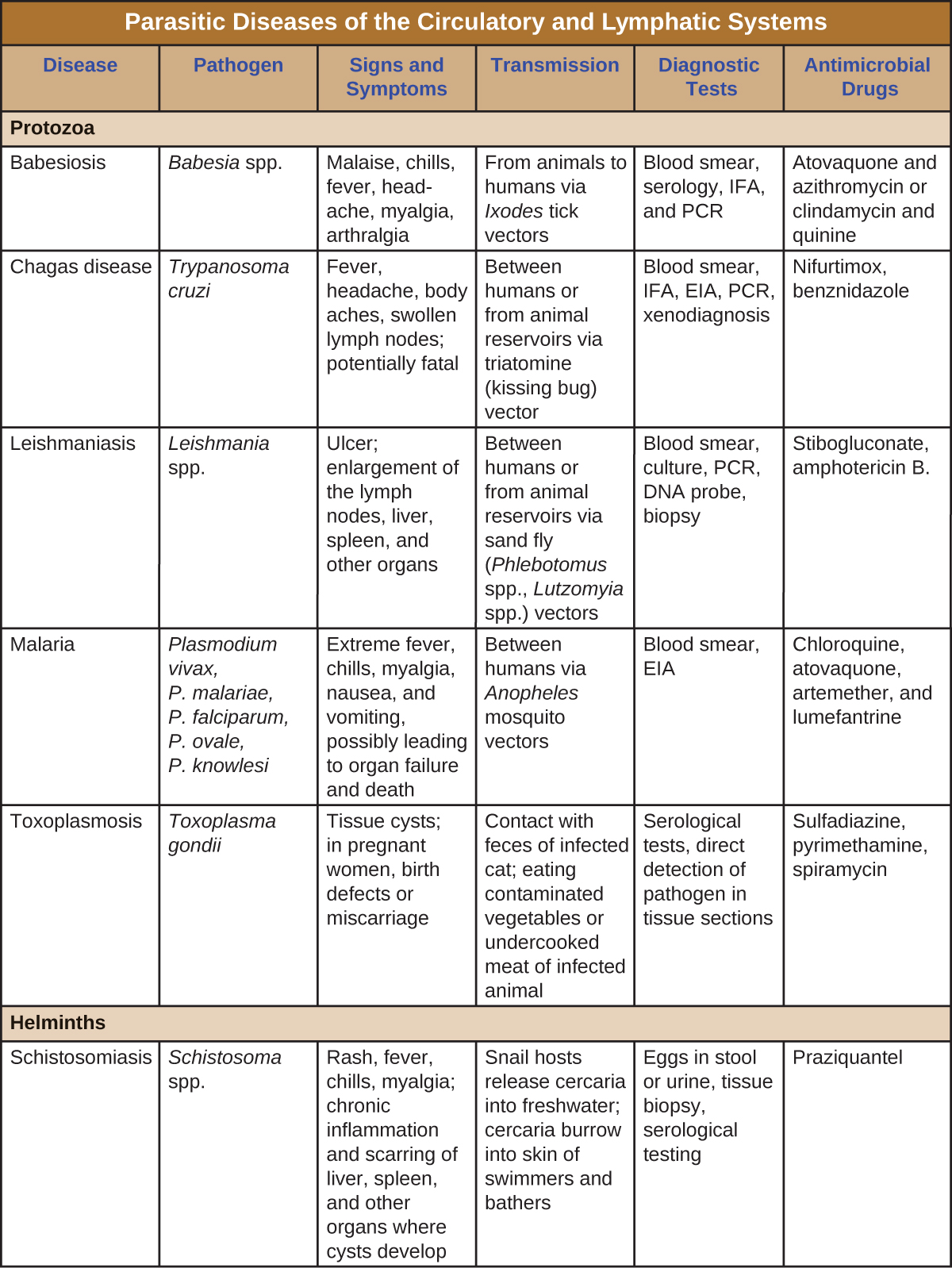| << Chapter < Page | Chapter >> Page > |
Diagnosis of schistosomiasis is made by the microscopic observation of eggs in feces or urine, intestine or bladder tissue specimens, or serologic tests. The drug praziquantel is effective for the treatment of all schistosome infections. Improving wastewater management and educating at-risk populations to limit exposure to contaminated water can help control the spread of the disease.
The cercaria of some species of Schistosoma can only transform into adult worms and complete their life cycle in animal hosts such as migratory birds and mammals. The cercaria of these worms are still capable of penetrating human skin, but they are unable to establish a productive infection in human tissue. Still, the presence of the cercaria in small blood vessels triggers an immune response, resulting in itchy raised bumps called cercarial dermatitis (also known as swimmer’s itch or clam digger's itch). Although it is uncomfortable, cercarial dermatitis is typically self-limiting and rarely serious. Antihistamines and antipruritics can be used to limit inflammation and itching, respectively.
Protozoan and helminthic infections are prevalent in the developing world. A few of the more important parasitic infections are summarized in [link] .

Despite continued antibiotic treatment and the removal of the venous catheter, Barbara’s condition further declined. She began to show signs of shock and her blood pressure dropped to 77/50 mmHg. Anti-inflammatory drugs and drotrecogin-α were administered to combat sepsis . However, by the seventh day of hospitalization, Barbara experienced hepatic and renal failure and died.
Staphylococcus aureus most likely formed a biofilm on the surface of Barbara’s catheter. From there, the bacteria were chronically shed into her circulation and produced the initial clinical symptoms. The chemotherapeutic therapies failed in large part because of the drug-resistant MRSA isolate. Virulence factors like leukocidin and hemolysins also interfered with her immune response. Barbara’s ultimate decline may have been a consequence of the production of enterotoxin s and toxic shock syndrome toxin (TSST) , which can initiate toxic shock.
Venous catheters are common life-saving interventions for many patients requiring long-term administration of medication or fluids. However, they are also common sites of bloodstream infections. The World Health Organization estimates that there are up to 80,000 catheter-related bloodstream infection s each year in the US, resulting in about 20,000 deaths. World Health Organization. “Patient Safety, Preventing Bloodstream Infections From Central Line Venous Catheters.” 2016. http://www.who.int/patientsafety/implementation/bsi/en/. Accessed July 29, 2016.
Go back to the previous Clinical Focus box.
The ________ mosquito is the biological vector for malaria.
Anopheles
The kissing bug is the biological vector for ________.
Chagas disease
Cercarial dermatitis is also known as ________.
swimmer’s itch
Describe main cause of Plasmodium falciparum infection symptoms.
Why should pregnant women avoid cleaning their cat’s litter box or do so with protective gloves?

Notification Switch
Would you like to follow the 'Microbiology' conversation and receive update notifications?